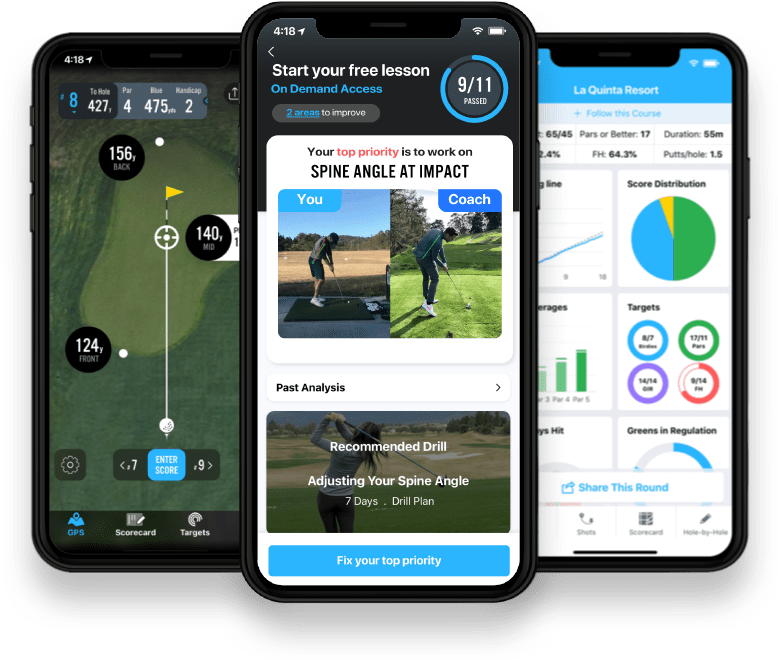Blind golf shots can be intimidating. They force golfers to trust their instincts and fire into the unknown. The Road Hole’s blind tee shot over a wall and hotel at The Old Course is both terrific and terrifying. Hitting the blind second shot on No. 6 at Pebble Beach, which has to quickly rise over the face of a cliff, is a visceral thrill and fear at the same time. Whether off the tee or on approach, blind shots are daunting for most golfers. But for Mario Tobia, they’re the only shots he knows. That’s because the four-time American Blind Golf Champion is blind.
Tobia’s complete blindness was brought upon by a degenerative condition called retinitis pigmentosa – a genetic disorder that changes how the retina reacts to light as it slowly and progressively deteriorates, and losing his vision was traumatic. Everyday tasks like work, personal care, and even just relaxing became overwhelming concerns as Mario struggled to cope and adjust. Ultimately, however, it was golf that Tobia credits for saving his life.

Golf gave Tobia the tools and resources that empowered him to live every day as an individual - who just happens to be blind. In fact, if Tobia was playing in the group in front of you, you probably wouldn’t even know he couldn’t see. Mario regularly drives the ball over 240 yards, and his short game is silky smooth. Tobia indulged his passion for golf instead of lamenting his impairment, and used that to set goals and accomplish things he couldn’t have even dreamed about when he had his sight – like becoming a two-time U.S. Blind Golf Association Champion and a four-time American Blind Golf Champion.
Blind golf is more of a team sport than the individual version we watch on television every week. With the help of his coach Frank Hesson, Tobia has become a testament to the United States Blind Golf Association motto: “you don’t have to see it to tee it.” Hesson will describe the hole Tobia’s playing, including water and sand hazards, fairway undulations, and the routing of each hole, including any doglegs, and then Mario will visualize the type of shot he wants to hit.

Hesson also sets up Tobia by pointing him in the direction needed to hit the particular shot, advising him on feet and club-face alignment, distance, and lie conditions. Tobia takes over from there, relying on muscle memory to trust his swing and groove it – which he does remarkably well. Mario uses special grips with particular markings to help him align and know where the clubface is pointed and typically shoots in the 90s. He’s even gone as low as 86 for his all-time best score.
Tobia may not be able to gaze up at some of the sweetly-struck shots he hits as the pros can, but the satisfaction he feels is just as profound, and he even uses the same technology many of the pros do. Working on his game from the comfort of home, Tobia trains through feel and sound thanks to a wearable instruction vest that provides audio feedback on his posture, while teaching and reinforcing his swing movements and patterns. It even allows Mario’s coach to communicate with him and provide instruction in real-time.

Golf is routinely known as a sport that’s incredibly difficult to master, and that just makes what Tobia has accomplished all the more impressive. It would have been easy for Tobia to succumb to losing his sight. Instead, Mario leaned on golf to keep going, the sport he’s loved since he was a young man. He has a disability, but he’s not disabled. Named the Most Courageous Athlete by the esteemed Philadelphia Sports Writers Association, Tobia celebrates each and every chance he gets to step on the golf course, and his story is a lesson we can all take to heart.
Sometimes all it takes to overcome adversity is to just put yourself out there, to never quit. Life opens up. Possibilities open up. And the human spirit prevails.
 Try for Free
Try for Free
